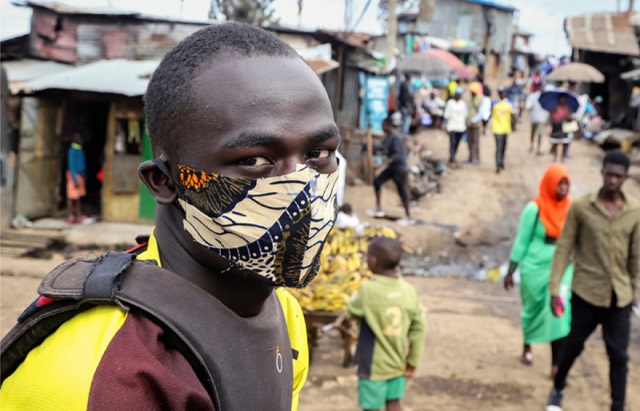
Why low COVID-19 death rates in Africa

Examining the theories so far
| KEVIN MARSH AND MOSES ALOBO | As the threat of a COVID-19 pandemic emerged earlier this year, many felt a sense of apprehension about what would happen when it reached Africa. For example, the Standard newspaper in Kenya reported on April 22 that “Anywhere between 300,000 and 3.3 million African people could lose their lives as a direct result of Covid-19, depending on the intervention measures taken to stop the spread.” Concerns over the combination of overstretched and underfunded health systems and the existing load of infectious and non-infectious diseases often led to it being talked about in apocalyptic terms.
However, it has not turned out quite that way. On September 29th, the world passed the one million reported deaths mark (the true figure will of course be higher). On the same day, the count for Africa was a cumulative total of 35,954.
Africa accounts for 17% of the global population but only 3.5% of the reported global COVID-19 deaths by Oct.07. All deaths are important, we should not discount apparently low numbers, and of course data collected over such a wide range of countries will be of variable quality, but the gap between predictions and what has actually happened is staggering. There has been much discussion on what accounts for this.
As leads of the COVID-19 team in the African Academy of Sciences, we have followed the unfolding events and various explanations put forward. The emerging picture is that in many African countries, transmission has been higher but severity and mortality much lower than originally predicted based on experience in China and Europe.
We argue that Africa’s much younger population explains a very large part of the apparent difference. Some of the remaining gap is probably due to under reporting of events but there are a number of other plausible explanations. These range from climatic differences, pre-existing immunity, genetic factors and behavioural differences.
Given the enormous variability in conditions across a continent – with 55 member states – the exact contribution of any one factor in a particular environment is likely to vary. But the bottom line is that what appeared at first to be a mystery looks less puzzling as more and more research evidence emerges.
The importance of age
The most obvious factor for the low death rates is the population age structure. Across multiple countries the risk of dying of COVID-19 for those aged 80 years or more is around a hundred times that of people in their twenties.
This can best be appreciated with a specific example. As of September 30, the UK had reported 41,980 COVID-19 specific deaths while Kenya, by contrast, had reported 691. The population of the UK is around 66 million with a median age of 40 compared with Kenya’s population of 51 million with a median age of 20 years.
Corrected for population size the death toll in Kenya would have been expected to be around 32,000. However if one also corrects for population structure (assumes that the age specific death rates in the UK apply to the population structure of Kenya), we would expect around 5,000 deaths. There is still a big difference between 700 and 5,000; what might account for the remaining gap?
Other possible contributors
One possibility is the failure to identify and record deaths.
Kenya, as with most countries, initially had little testing capacity and specific death registration is challenging. However, Kenya quickly built up its testing capacity and the extra attention to finding deaths makes it unlikely that a gap of this size can be fully accounted for by missing information.
There has been no shortage of ideas for other factors that may be contributing.
A recent large multi-country study in Europe reported significant declines in mortality related to higher temperature and humidity. The authors hypothesised that this may be because the mechanisms by which our respiratory tracts clear virus work better in warmer more humid conditions. This means that people may be getting less virus particles into their system.
It should be noted however that a systematic review of global data – while confirming that warm and wet climates seemed to reduce the spread of COVID-19 – indicated that these variables alone could not explain most of the variability in disease transmission. It’s important to remember that there’s considerable weather variability throughout Africa. Not all climates are warm or wet and, if they are, they may not stay that way throughout the year.
Other suggestions include the possibility of pre-existing protective immune responses due either to previous exposure to other pathogens or to BCG vaccination, a vaccine against tuberculosis provided at birth in most African countries. A large analysis – which involved 55 countries, representing 63% of the world’s population – showed significant correlations between increasing BCG coverage at a young age and better outcomes of COVID-19.
Genetic factors may also be important. A recently described haplotype (group of genes) associated with increased risk of severity and present in 30% of south Asian genomes and 8% of Europeans is almost absent in Africa.
The role of these and other factors – such as potential differences in social structures or mobility – are subject to ongoing investigation.
The post Why low COVID-19 death rates in Africa appeared first on The Independent Uganda:.
0 Response to "Why low COVID-19 death rates in Africa"
Post a Comment